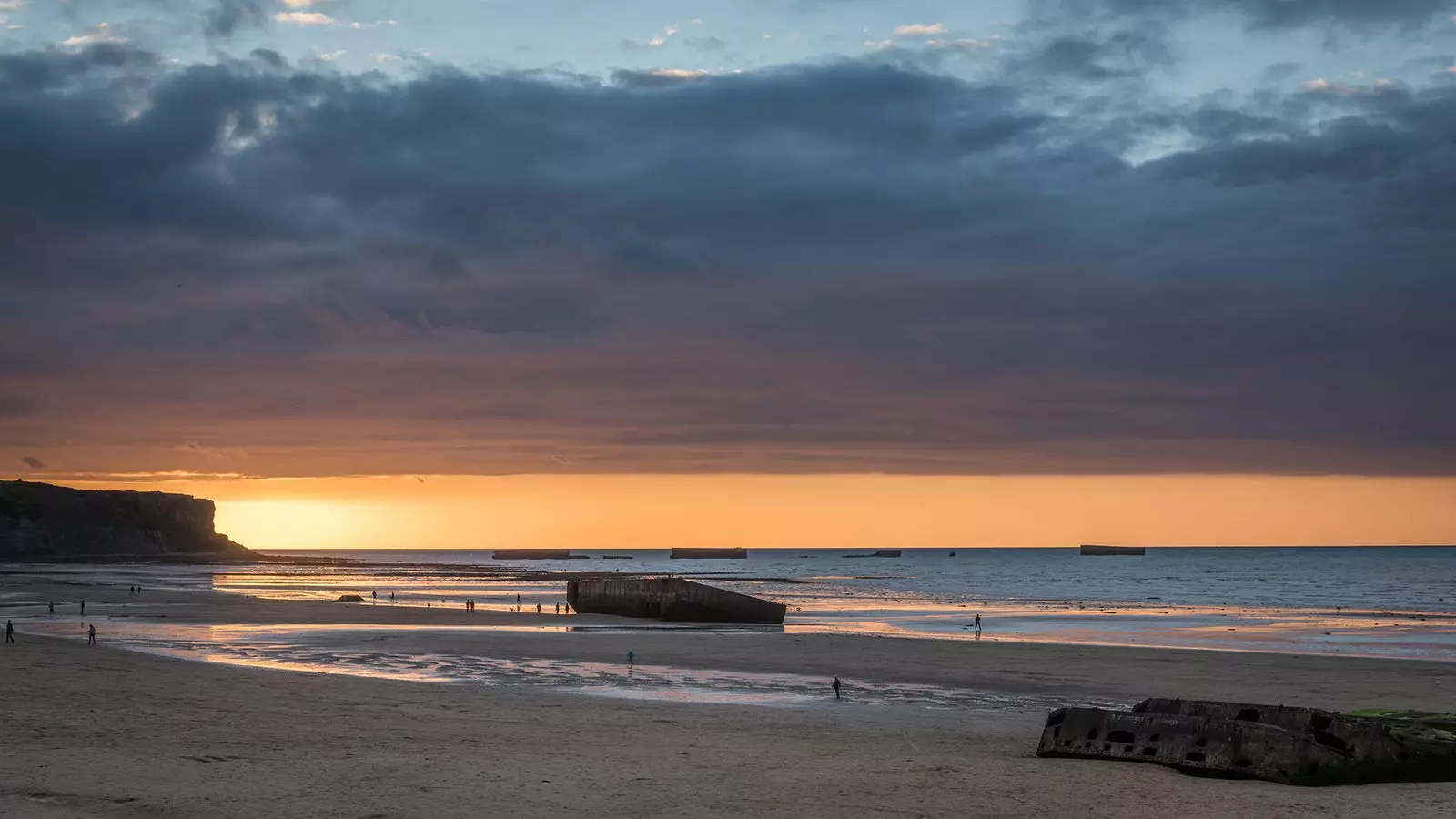
Sunset at Gold beach
Utah, Omaha, Gold, Juno and Sword. Five words that you have probably heard at some point in your life, even if you can't place them right now. The names of the five beaches where the most famous battle in history took place.
This year has been the 75th Anniversary Of The Normandy Landings, the Allied military operation that began the liberation of France and dealt a decisive blow to the Nazi regime of terror in Europe.
But what traces of that historic battle remain today? We track the key landing sites practicing an unconventional tourism, in which our imagination is almost as important as our camera.
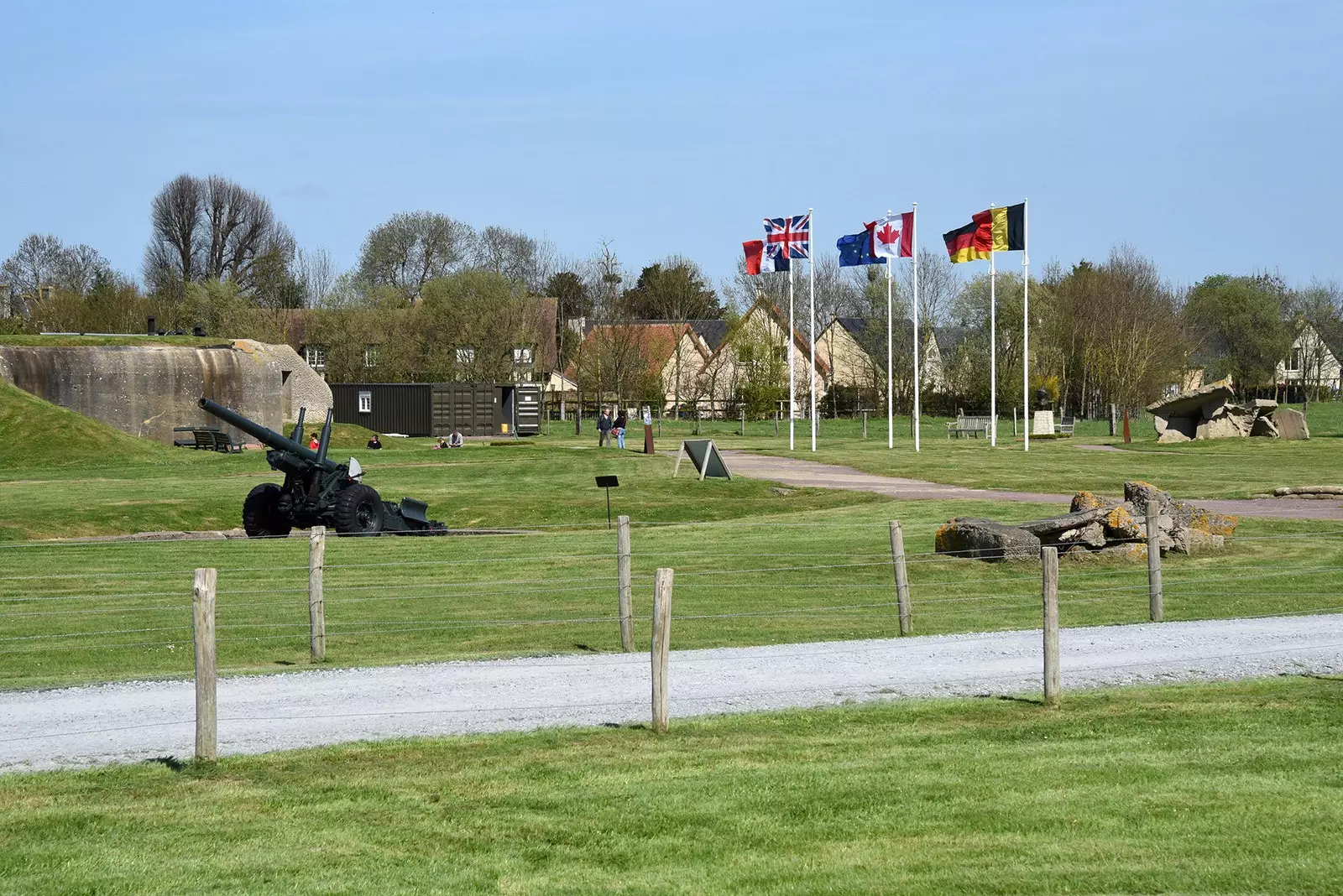
Merville Battery
THE MERVILLE BATTERY, PEGASUS BRIDGE AND SWORD BEACH
We tackled the journey from east to west beginning not on the coast, but a few miles inland, at a complex of four concrete bunkers near Ouistreham, where the ** Merville battery is located.** It is one of the many german fortifications designed to stop enemy attacks from the coast.
The emplacement, one of the best preserved of its kind, threatened the attack on Sword Beach, and was taken by British paratroopers hours before D-Day. Today is a interesting museum where weapons and material of the time are preserved.
Outside the bunkers, a memorial flanked by the English and French flags guards a legendary C-47 , the plane that showered all of Normandy with airborne forces the night of the invasion.
However, the main course awaits us inside the largest bunker in the complex, where every 20 minutes the drumming is recreated through an effective sound and light show. Enclosed between rough walls and under a darkness lit only by flashing red lights, sirens, screams in German and deafening gunshots leave a disturbing sensation, but, at the same time, powerfully didactic.
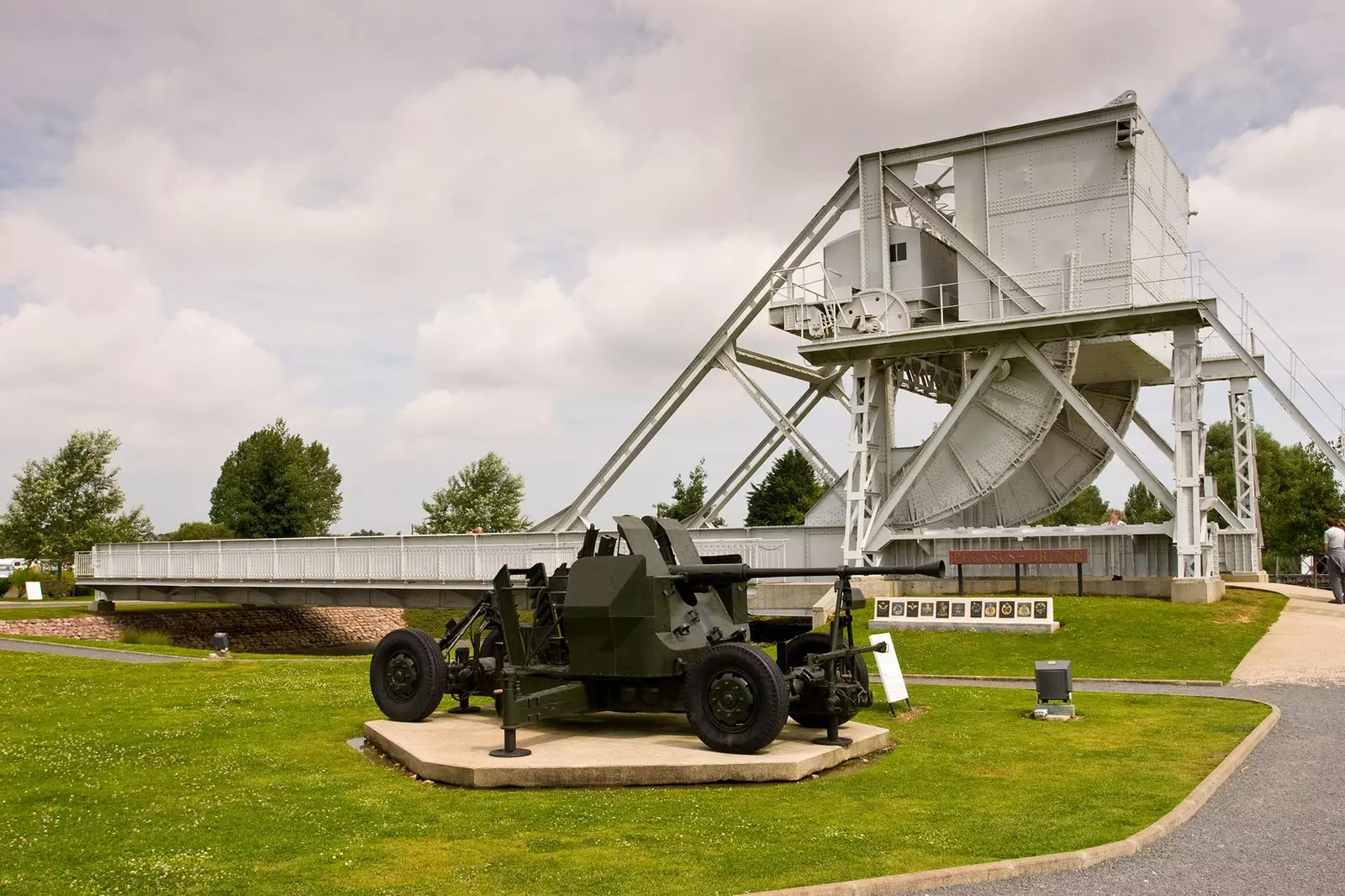
The original Pegasus Bridge
A short distance from there, we crossed the Horsa and Pegasus bridges over the River Orne and the Caen Canal, captured by the English to secure the eastern flank of the landing, and visited their Memorial .
At the foot of the Pegasus Bridge we can stop for a snack at the first French house to be liberated on D-Day: the Café Gondrée **.
It is time then to reach the coast, to the first of the five beaches: Sword. Assigned to the British Army, at this first stop it is de rigueur to visit the Museum The Grand Bunker at its eastern end, already in the city of Ouistreham.
Once an observation post the height of this concrete monster is impressive. A huge five-storey framework, full of rooms and nooks, crowned by a coastal surveillance room equipped with a spyglass, from which the Germans controlled the activity of the English Channel. It is very easy to get an idea of how the soldiers lived through the rescued equipment of the time: personal effects, newspapers, kitchen and bathroom material and, of course, weapons and uniforms.
Outdoors, it is worth photographing yourself next to the actual landing craft used for the movie Saving Private Ryan. We already started to notice the Hollywood effect on our tour.
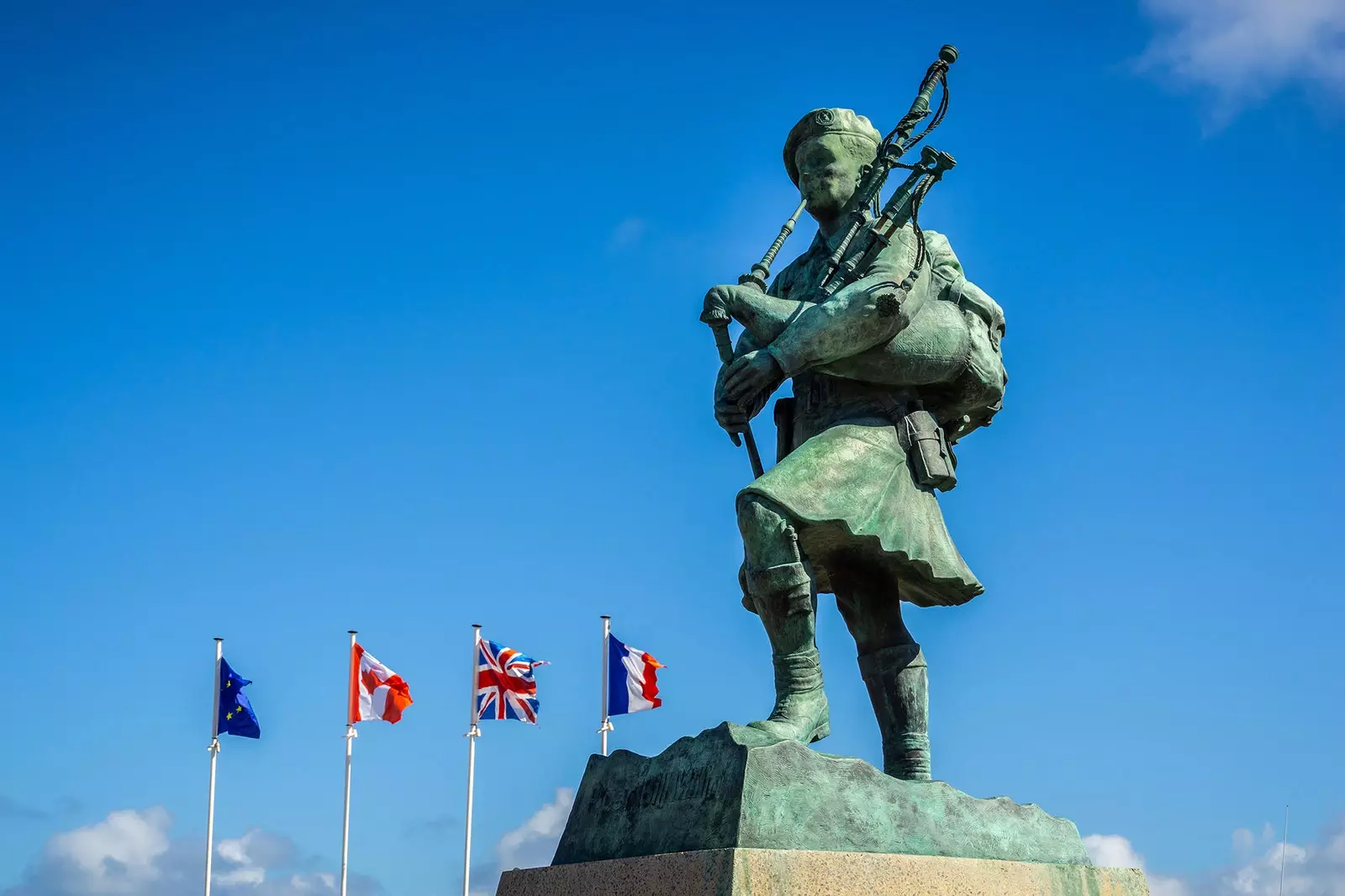
Statue of Piper Bill Millin, the most famous musician of D-Day
We follow the line of the beach through beautiful urbanizations and wealthy villas to meet the statue of Piper Bill Millin, the most famous musician of D-Day, known for landing playing his bagpipes in the middle of the crossfire by order of his commander-in-chief, the flamboyant Scottish officer Lord Lovat.
That is when we must be prepared to constantly stop: commemorative plaques and the occasional tank They appear next to the road until you reach the following beach: Juno.
JUNO AND GOLD BEACHES
The work of taking the Juno beach corresponded fundamentally to the Canadian Army. The exploits of his soldiers are explained today in the Juno Beach Center , a museum built thanks to donations from relatives and war veterans that stands out from the rest: gives priority to the didactic part and for children. Observing the video testimonies it is difficult not to get emotional.
Arriving to Arromanches , stop at the gold beach and visiting its museum almost at the foot of the sand will offer us the most strategic vision of the contest . Here was built one of the huge artificial harbors that allowed unloading the necessary equipment to complete the landing.
huge cement blocks, popularly known as Mulberrys, they were submerged in the sea to form breakwaters. Many are still visible from the beach and we can even touch a rust-eaten structure on the shore.
The Babylonian task of its construction, transportation and subsequent deployment is shown through incredibly realistic models in the Normandy Landing Museum of this locality. An unmissable visit.
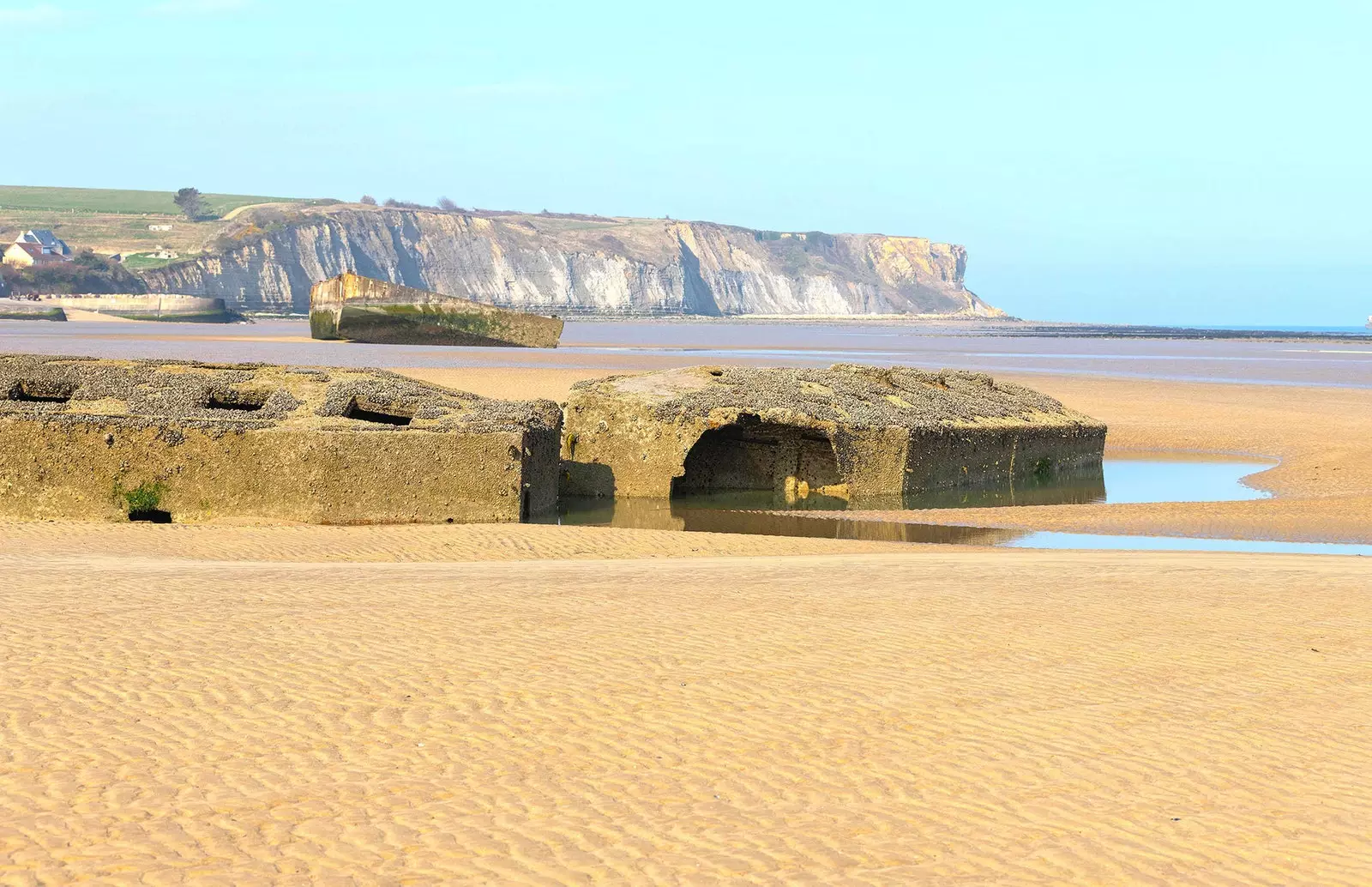
The Mulberrys can still be seen on Gold Beach
End the day by visiting the Batteries of Longues-sur-Mer gives us another impressive sample of the Atlantic Wall of the III Reich: four casemates adorned with huge cannons, plus an artillery control bunker off the coast, with extensive views of the Canal.
It is one of the most important German fortifications in the area, accessible free of charge and without any restrictions: we can climb to the top of the bunkers or even on top of the cannons, and believe ourselves General Patton for a moment. Our physical integrity will run, yes, on our own.
SLEEPING IN BAYEUX ON THE WAY TO OMAHA
In addition to a must see, Bayeux It is an ideal place to spend the night. This jewel of the Department of Calvados and strategic enclave between Gold and Omaha It was the first city liberated after D-Day.
worth visiting its fabulous Cathedral and get lost in its quiet streets, with its small boutiques of bread and sweets. We must not forget that we are in the region of Norman cider and butter cookies.
And from one pack to another. In the Normandy Battle Museum of the city we will give ourselves another masterful binge of tanks, cannons and uniforms, with a marked local accent: Charles de Gaulle delivered his first speech on liberated French soil in this town on June 14, 1944.
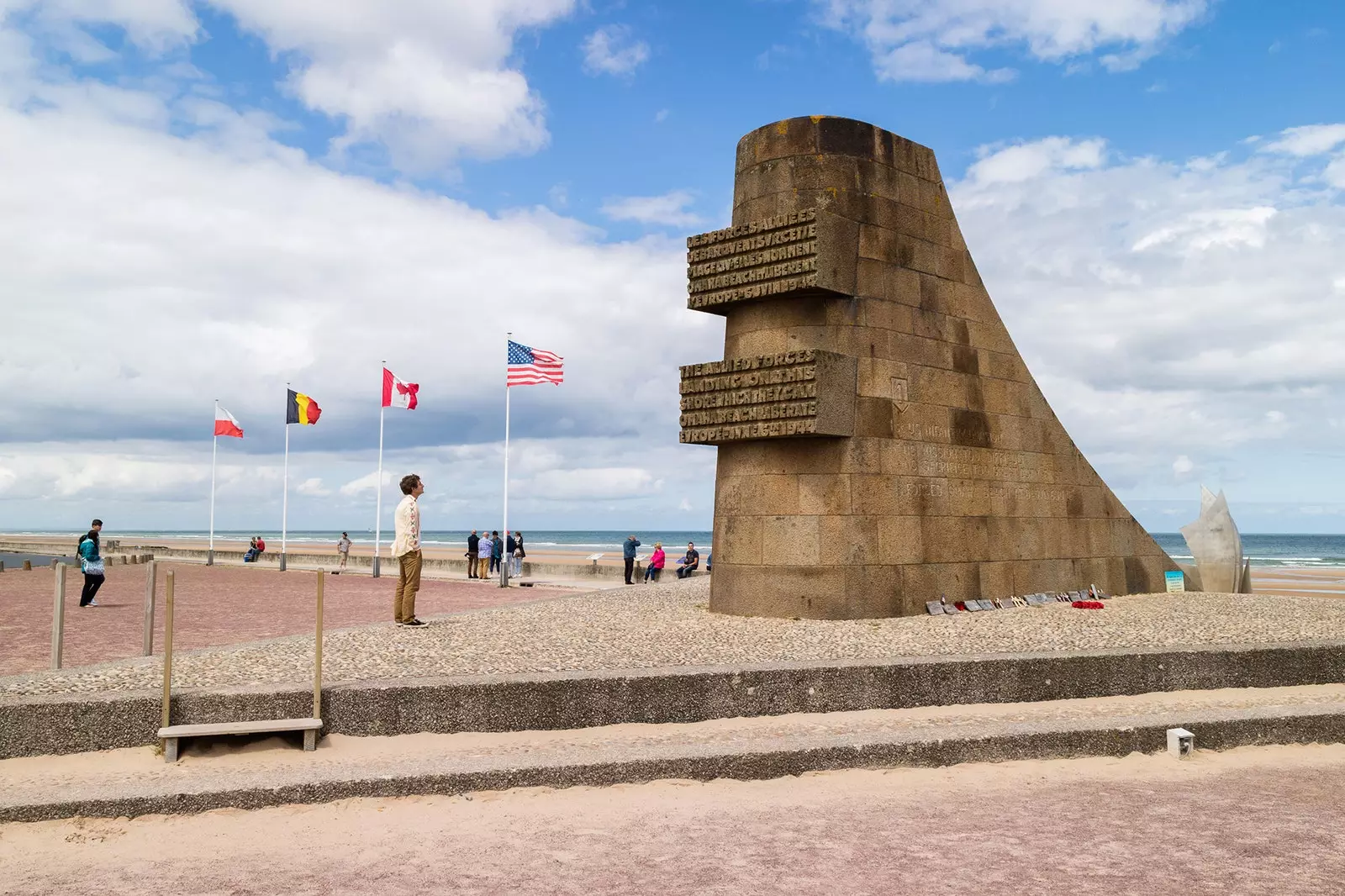
Omaha beach, the highlight of the trip
However, the highlight of the entire route comes just after. Nothing compares to Omaha Beach, where the atmosphere of historical respect until now present fades to spread that movie spirit so authentically yankee , which of course also poisons us.
start by visiting the Omaha American Cemetery , where more than 9,000 American soldiers rest, will leave us strategically touched. a walk through the beach, cold and lonely, bathed in inclement weather, it will be perfect to lose ourselves in our thoughts, because if they have something the beaches of Normandy is an ideal condition to give free rein to our imagination (and the imagination, remember, is important in this adventure) .
We will not leave there without visually drawing the route that the soldiers traced under the rain of bullets and bombs. And excited, almost slightly dejected, we ended up visiting the Overlord Museum from Omaha. The most impressive, without a doubt, visually. The soundtrack of the Batman saga, by Hans Zimmer (yes, from Batman) welcomes us to the entrance, spiced with sounds of planes, gunfire and explosions. These Americans, how well they know how to sell, and sell themselves.
Let us not be carried away by indignation: under the cloak of frivolity, an incredible collection of vehicles, including one of the few surviving German Panzer Tiger examples, and all kinds of military equipment of both sides of incalculable value.
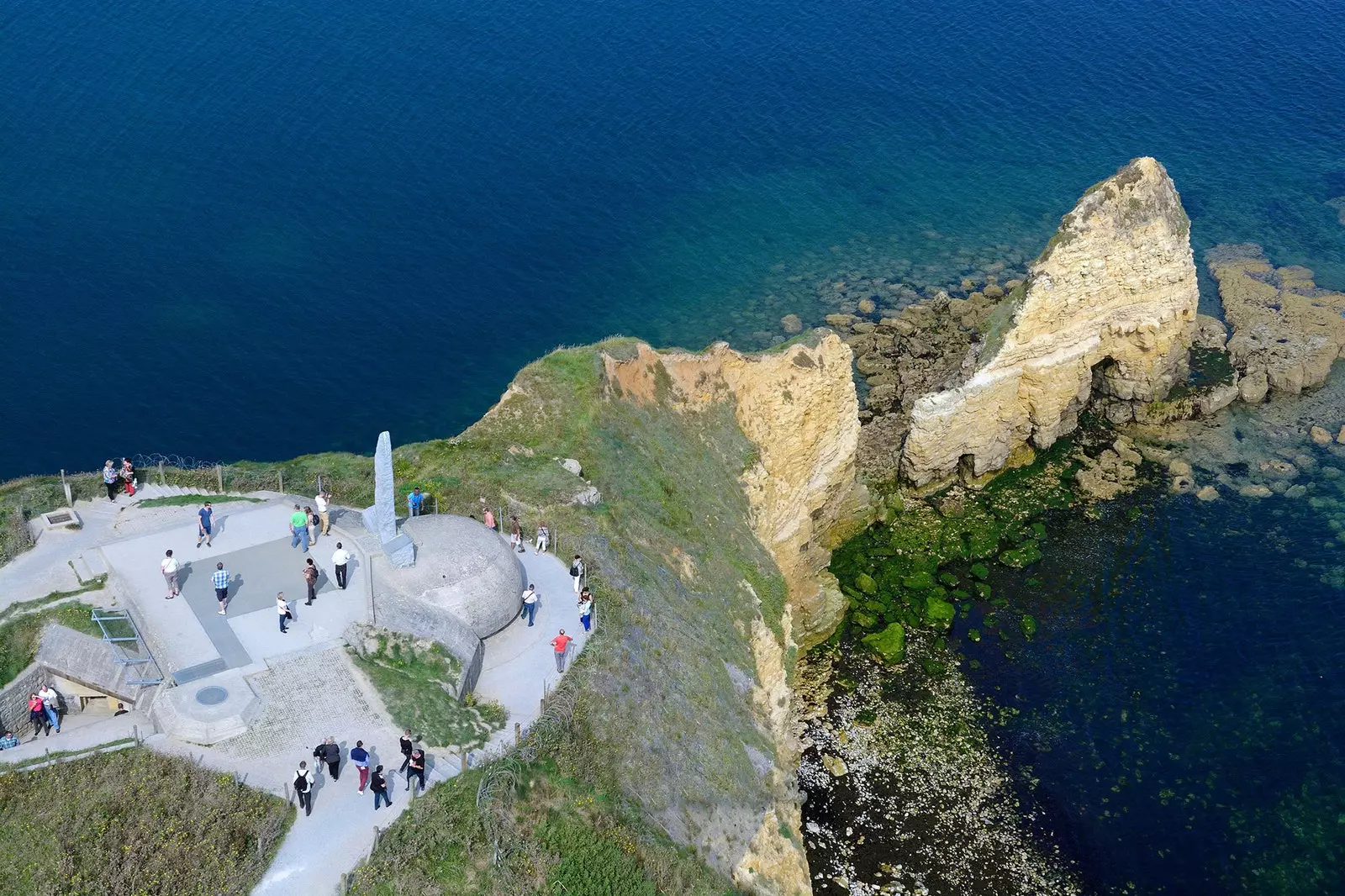
Point du Hoc
The last essential stop in Omaha is at its western end, in The Pointe du Hoc . A strategic enclave located in high on a cliff several meters above sea level, which was heavily bombed on D-Day.
The place was scaled and taken body to body by American soldiers. Still today you can see the huge craters caused by the impacts of the shells, as well as a large network of bunkers, crowned by an impressive surveillance casemate that dominates the whole place.
FINISHING IN CARENTAN, SAINTE-MÈRE-ÉGLISE AND UTAH BEACH
Already in the heart of the Cotentin peninsula, Carentan and Sainte-Mère-Église They are not only two essential points, but also ideal places to spend the night. Both towns were in the crosshairs of the two US parachute divisions that secured the western flank of the invasion.
It is now that we make contact with the most rural part of the route . Small towns of houses with pointed roofs, narrow roads through endless pasture fields and fenced with cows and horses. At each intersection there is a memorial, a plaque with the names of fallen soldiers and flags flying.
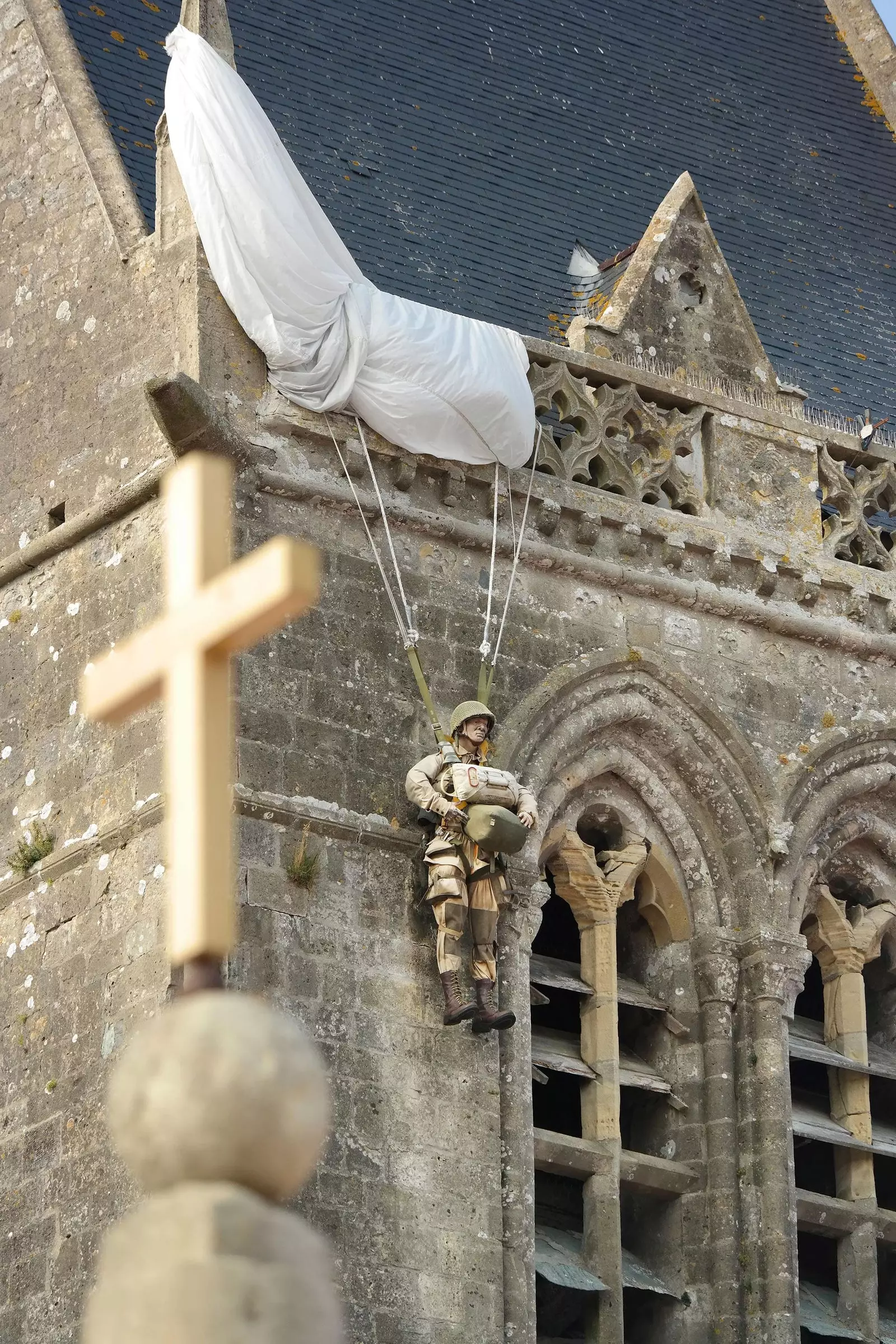
The famous parachutist from the Sainte-Mère-Église church
At Carentan, the 101st Airborne fought some of the fiercest fighting on D-Day , immortalized in the HBO series Blood Brothers. Strolling through its streets, where the American and French flags are displayed in every store, makes us wonder if the history of this region did not really begin until June 6, 1944.
Sainte-Mère-Église, for its part, falls in love with its smiling square and its famous church, whose stained glass windows illustrate parachutes and airplanes next to the Virgin , and where a paratrooper soldier still hangs from the bell tower. A reproduction, of course, of the soldier John Steele , which on the night of June 5 to 6, 1944 was suspended just above the square, and he managed to survive the carnage by playing dead, while he saw how the Germans machine-gunned his companions almost before they hit the ground.
We must not miss visiting the Airborne Troops Museum , in which the particular mission of the paratroopers is magnificently exhibited, their combat teams and their curious tactics. It is also worth taking a look around the Dead Man's Corner and the D-Day Experience in Saint-Côme-du-Mont, two other unmissable exhibitions.
For collectors, this area is a paradise: **here we will find the best D-Day memorabilia shops. Au Jour J Militaria ** or ** Le Holdy ** are good examples of this.
Our long journey ends on the beach Utah , the furthest west of the landing area. Going with time, it will have been worthwhile to walk before the ** coastal batteries of Crisbecq ** and ** Azeville **, more examples of the German architecture of the Atlantic Wall.
In Utah, a landing craft greets the beach, just off the Battle Museum In this sector. A few last wanders through the bunkers and armored cars along the coast , if the forces still reach us, they will signal the end.
We will then have drawn our particular Normandy Landings in a trip that is half materialistic, half imaginary, in which, without a doubt, the best souvenir will not be in our backpack, but in our memories.
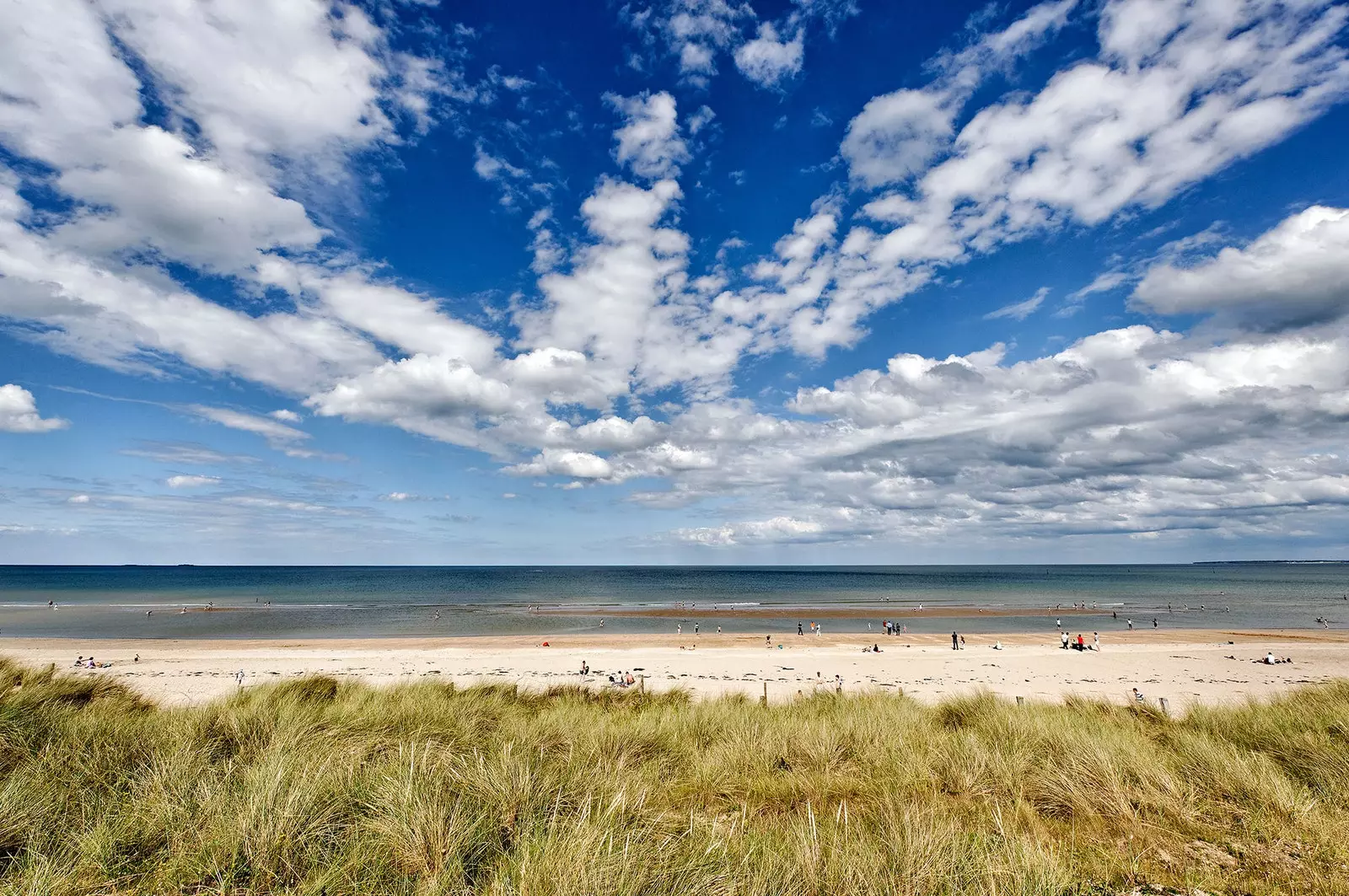
utah beach
